Shin splints exercises are essential for recovery and prevention, focusing on stretching and strengthening muscles around the shin to alleviate pain and improve flexibility․
1․1 Understanding Shin Splints
Shin splints, or medial tibial stress syndrome, are characterized by pain along the inner edge of the shinbone․ Often caused by overuse, they commonly affect runners and athletes․ The condition results from repetitive stress on the muscles, tendons, and bone tissue, typically due to intense physical activity or improper training techniques;
1;2 Importance of Exercises in Recovery
Targeted exercises are crucial for shin splints recovery, alleviating pain and enhancing flexibility․ Strengthening muscles around the shin and improving mobility helps prevent future injuries․ Regular practice promotes healing, supports long-term relief, and allows a safe return to physical activities without aggravating the condition․
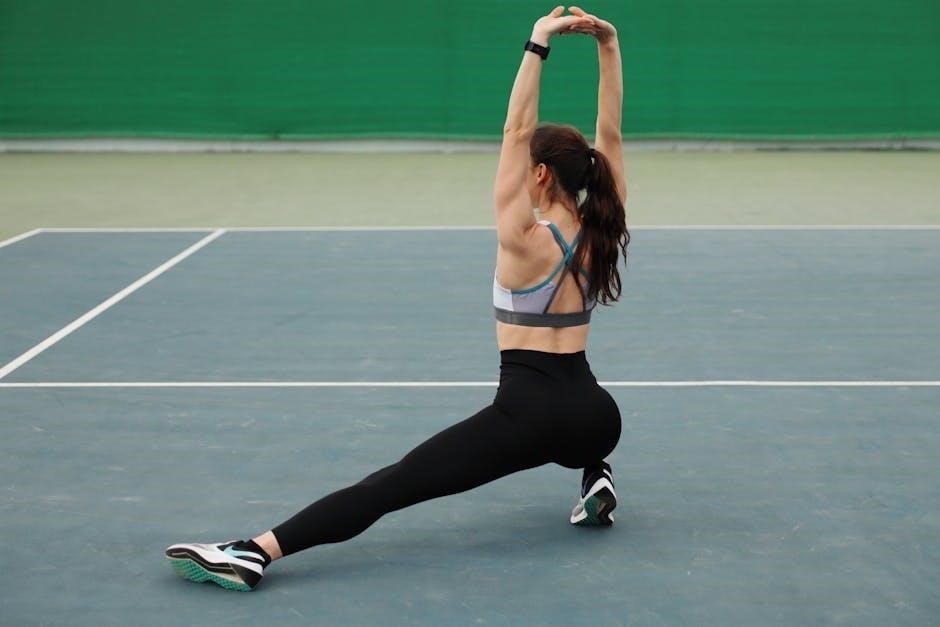
The RICE Method for Initial Treatment
The RICE method—Rest, Ice, Compression, and Elevation—is a proven approach to reduce pain and swelling in shin splints, promoting healing and preventing further injury․
2․1 Rest: Avoiding Aggravating Activities
Rest is crucial in treating shin splints․ Avoid activities that cause pain, such as running or jumping, and opt for low-impact exercises like swimming or cycling to promote healing without strain․
2․2 Ice: Reducing Inflammation
Apply ice packs to the affected area for 20-30 minutes every 3-4 hours to reduce inflammation and pain․ Ice massage can also be effective by freezing water in a cup and massaging the shin gently to alleviate symptoms and promote healing․
2․3 Compression: Supporting the Shin
Use elastic bandages or compression sleeves to wrap the shin area, providing support and reducing swelling․ Ensure the wrap is snug but not overly tight to avoid restricting blood flow․ This method helps stabilize the muscles and tissues, promoting healing while allowing for gentle movement during recovery․
2․4 Elevation: Reducing Swelling
Elevate the affected leg above heart level using pillows or a wedge to reduce swelling and promote blood flow back to the heart․ This simple technique helps minimize inflammation and accelerates the healing process when combined with rest and ice therapy, making it a crucial part of the RICE method for shin splints recovery․
2․5 Modifying Activities for Healing
Modify activities to reduce stress on the shins, such as avoiding high-impact exercises and switching to low-impact alternatives like swimming or cycling․ This allows the lower leg to heal while maintaining fitness․ Gradually reintroduce activities once pain subsides, ensuring proper progression to prevent recurrence and support the recovery process effectively․
Stretching Exercises for Shin Splints
Stretching exercises, such as standing gastrocnemius stretches and seated toe stretches, help relieve tightness in the lower leg muscles, improving flexibility and reducing shin splint discomfort effectively․
3․1 Standing Gastrocnemius Stretch
The standing gastrocnemius stretch targets the calf muscles, crucial for shin splint relief․ Stand facing a wall, step one leg back, and press the heel down, bending the front knee․ Hold for 20-30 seconds, switch legs, and repeat 2-3 times to enhance flexibility and reduce muscle tension effectively․
3․2 Seated Toe Stretch
Sit on the floor with legs extended․ Loop a towel around the toes and gently pull toward your body, stretching the calves․ Hold for 20-30 seconds, 3-4 times; This seated toe stretch relieves shin splint pain and enhances flexibility effectively․
3․3 Towel Stretch for Flexibility
Sit on a hard surface with legs straight․ Loop a towel around the ball of one foot․ Gently pull the towel toward your body, stretching the calf and shin․ Hold for 30 seconds, repeat 3-4 times․ This towel stretch improves flexibility and reduces shin splint discomfort effectively․
Strengthening Exercises for Shin Splints
Strengthening exercises target calf muscles, improving endurance and reducing shin splint discomfort․ Techniques include step-ups, soleus squats, and resisted plantar flexion, often using resistance bands or bodyweight for effective results․
4․1 Step Ups for Calf Strength
Step-ups target the calf muscles and shin area, enhancing strength and stability․ Stand in front of a sturdy box or step, leading with the affected leg․ Step up, then step down slowly․ Gradually increase the box height as strength improves․ Perform 3 sets of 8-12 repetitions for optimal results and injury prevention․
4․2 Soleus Squats
Soleus squats focus on strengthening the lower leg muscles, crucial for shin splint recovery․ Stand with feet shoulder-width apart, slide down a wall to 80-degree knee flexion, and raise heels off the ground․ Hold for 5 seconds, ensuring proper form․ Perform 3 sets of 10-15 repetitions to enhance muscle endurance and reduce injury risk effectively․
4․3 Resisted Plantar Flexion
Resisted plantar flexion strengthens the muscles controlling foot movement․ Sit with legs extended, loop a resistance band around the foot, and gently press it downward․ Hold for 5 seconds, then return to the starting position․ Perform 3 sets of 10 repetitions to improve ankle stability and reduce shin splint discomfort effectively․
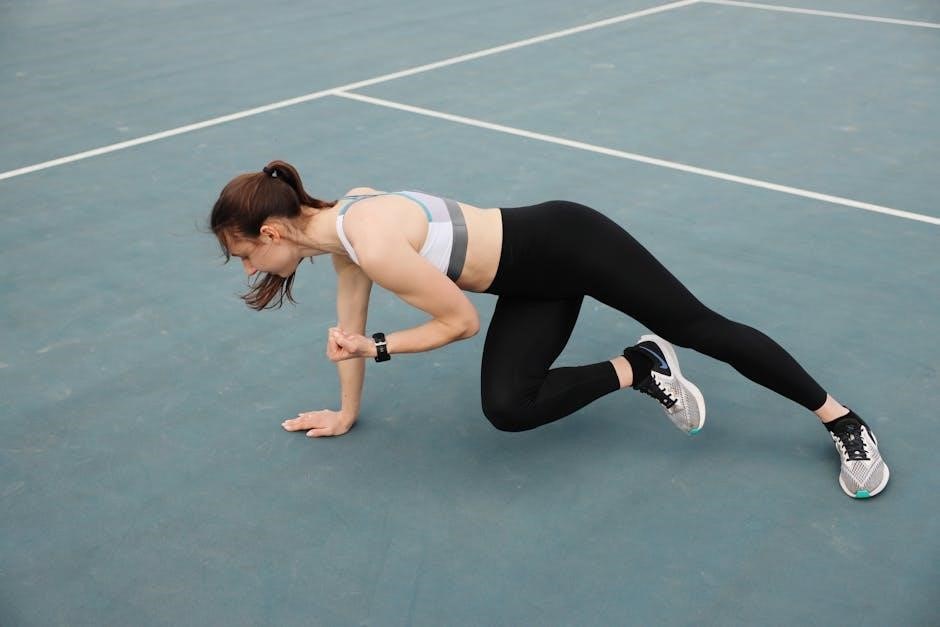
Home Treatment and Care
Home treatment involves rest, ice, compression, and elevation to reduce pain and swelling․ Use supportive footwear, avoid high-impact surfaces, and engage in low-impact activities during recovery․
5․1 Pain Management Techniques
Effective pain management for shin splints involves applying ice packs to reduce inflammation and alleviate discomfort․ Compression bandages can also help minimize swelling․ Elevating the legs above heart level promotes blood flow and reduces pain․ Over-the-counter pain relievers, such as ibuprofen, can be used to manage pain and inflammation during the healing process․
5․2 Proper Footwear and Orthotics
Wearing supportive footwear with proper arch support and cushioning can significantly reduce shin splint discomfort․ Orthotics, such as shoe inserts, help redistribute pressure and align the foot correctly․ Avoiding flat or worn-out shoes is crucial․ Custom orthotics may be recommended for individuals with specific gait issues to prevent further strain on the shin area․
5․3 Avoiding High-Impact Surfaces
Minimizing activities on hard surfaces, such as concrete, can reduce shin stress․ Opting for softer surfaces like grass or tracks lessens the impact on legs․ Using proper footwear on all surfaces further aids in shock absorption, promoting healing and preventing reinjury while managing shin splint recovery effectively every day․
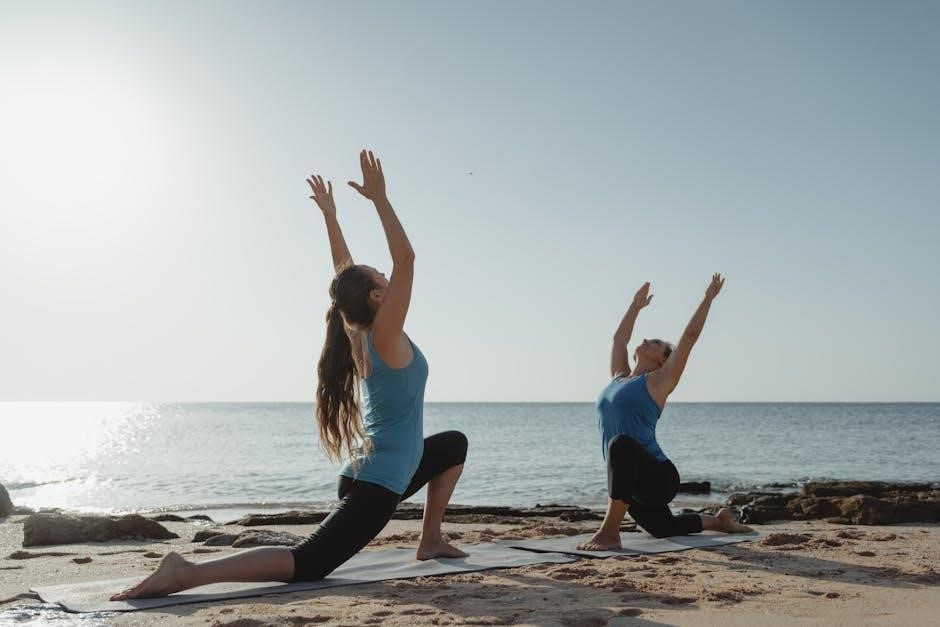
Preventing Shin Splints
Preventing shin splints involves gradual intensity increases, proper footwear, and strengthening exercises․ Prioritizing rest, ice, and modifying activities can also help avoid recurrence and promote long-term leg health․
6․1 Gradual Increase in Exercise Intensity
Avoid sudden changes in workout routines by gradually increasing exercise intensity and duration․ This allows muscles and bones to adapt, reducing the risk of shin splints․ Consistency and patience are key to building strength and endurance without overloading the lower legs․
6․2 Choosing the Right Running Surfaces
Opt for softer surfaces like grass or tracks instead of concrete to reduce impact on the shins․ Avoid uneven or hard surfaces that can exacerbate stress on the lower legs, leading to shin splints․ Proper surface selection helps minimize strain and supports long-term injury prevention․
6․3 Strengthening Core and Leg Muscles
Strengthening the core and leg muscles, particularly the calves and hamstrings, is crucial for shin splints prevention․ Exercises like step-ups, soleus squats, and resisted plantar flexion improve muscle stability and reduce stress on the shins during physical activities, promoting overall lower limb strength and resilience against injuries․
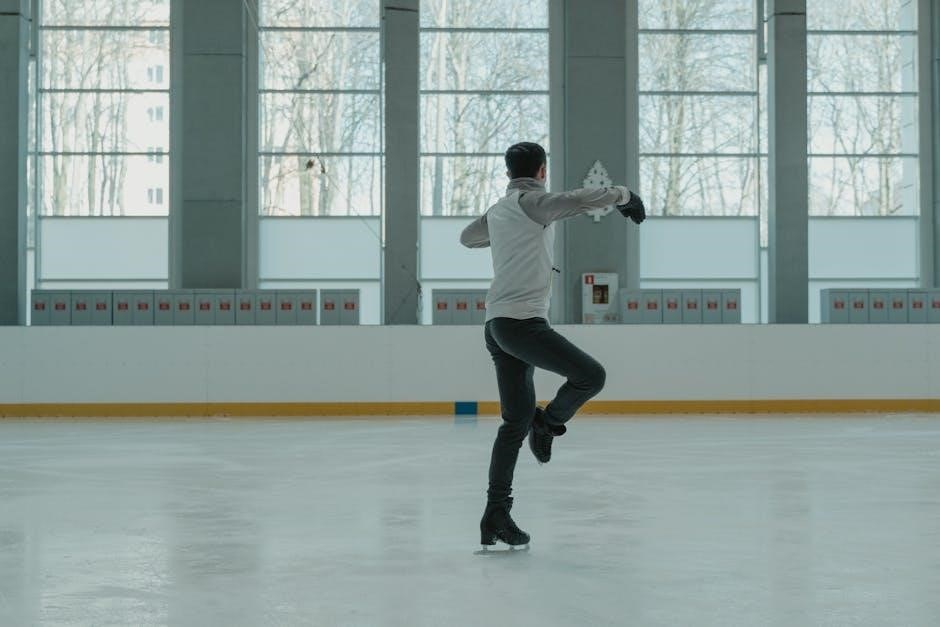
When to See a Healthcare Professional
Consult a healthcare professional if shin splint pain persists despite rest and treatment, or if severe swelling, numbness, or weakness occurs, indicating a need for advanced care․
7․1 Signs of Severe Pain or Swelling
Severe pain or swelling that worsens with activity, redness, or warmth around the shin area may indicate a serious injury․ If pain persists or intensifies, seek professional medical advice to rule out stress fractures or other complications and ensure proper treatment․
7․2 Persistent Symptoms Despite Treatment
If symptoms like pain or swelling linger despite following treatment plans, it’s crucial to consult a healthcare professional․ Persistent issues may indicate underlying conditions requiring advanced care, such as physical therapy or orthopedic interventions, to ensure full recovery and prevent further complications․
7․3 Need for Customized Rehabilitation Plans
A personalized rehabilitation plan is often necessary for persistent shin splint cases, as generic treatments may not address individual needs․ A healthcare professional can tailor exercises, stretching routines, and strengthening programs to the patient’s specific condition, ensuring effective recovery and preventing future injuries through targeted muscle support and activity modification․
Recovery Timeline and Expectations
Recovery typically takes 2-4 weeks with consistent rest, ice, and targeted exercises․ Gradual return to activity is crucial to avoid re-injury and ensure full healing․
8․1 Initial Healing Phase
The initial healing phase focuses on reducing inflammation and pain through rest, ice, and compression․ This period typically lasts 1-2 weeks, emphasizing the RICE method․ Activities should be modified to avoid aggravating the injury, with a gradual transition to low-impact exercises once pain subsides․ Proper care during this phase is crucial for preventing prolonged recovery․
8․2 Gradual Return to Activity
A gradual return to activity involves resuming low-impact exercises like swimming or cycling after the initial healing phase․ Avoid high-impact surfaces and gradually reintroduce running or jumping․ Start with short sessions, increasing duration and intensity slowly․ Monitor pain levels and stop if discomfort persists, ensuring a balanced and patient approach to prevent re-injury․
8․3 Long-Term Prevention Strategies
Long-term prevention involves consistent stretching, strengthening, and proper footwear․ Incorporate regular exercises like toe raises and calf stretches․ Use orthotics if needed and avoid high-impact surfaces․ Gradually increase workout intensity to prevent overuse․ Maintain a balanced routine with low-impact activities to ensure shin health and reduce recurrence risk effectively over time․
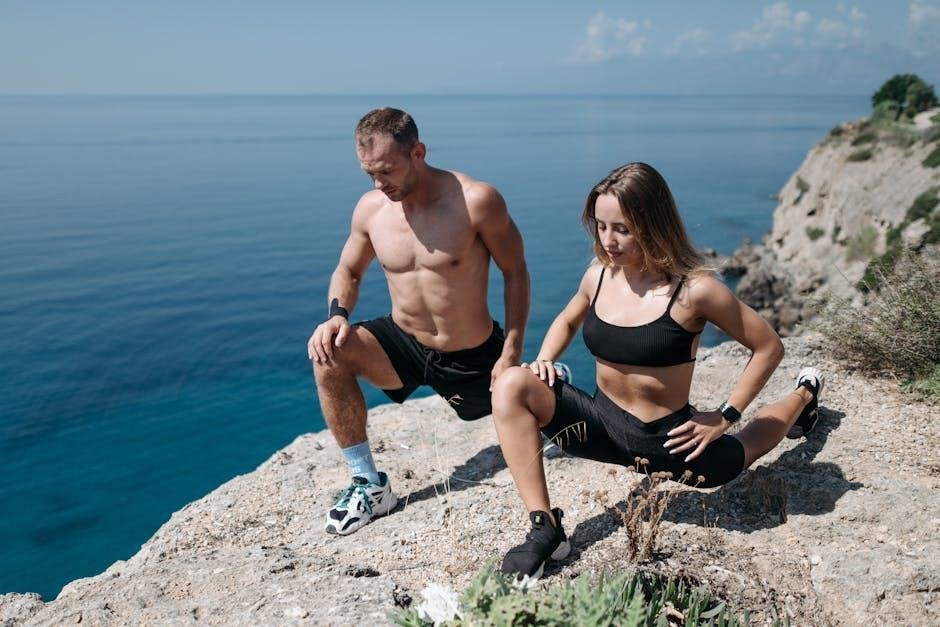
Sample Workout Plan for Shin Splints
A sample plan includes a warm-up, step-ups, soleus squats, and resisted plantar flexion exercises, followed by a cool-down to enhance recovery and prevent recurrence․
9․1 Warm-Up Routine
A proper warm-up includes light cardio like jogging or cycling for 10 minutes, followed by dynamic stretches such as leg swings and ankle rotations to prepare muscles and improve flexibility, ensuring a safe transition into more intense exercises and reducing the risk of injury․
9․2 Exercise Sequence
Begin with step-ups targeting calf strength, followed by soleus squats to enhance lower leg stability․ Include resisted plantar flexion using a Thera-Band for added resistance․ Complement with towel stretches and ankle rotations to improve flexibility and reduce muscle tension, ensuring a balanced approach to strengthening and mobility․
9․3 Cool-Down Stretching
Finish with gentle stretches to relax muscles and improve flexibility․ Perform standing gastrocnemius stretches, seated toe stretches, and towel stretches, holding each for 20-30 seconds․ Include ankle rotations to enhance circulation and reduce tension․ This routine helps prevent stiffness and promotes recovery after your exercise sequence․
Shin splints exercises, combined with proper care, can effectively aid recovery and prevent future injuries․ Consistency and patience are key to achieving long-term relief and strength․
10․1 Summary of Key Points
RICE method aids initial recovery, while stretching and strengthening exercises promote healing and prevent recurrence․ Proper footwear and avoiding high-impact surfaces are crucial; Consistency in rehabilitation routines ensures long-term relief and strengthens shin muscles effectively, reducing injury risk․
10․2 Encouragement for Consistent Practice
Consistency is key to overcoming shin splints․ Regular stretching and strengthening exercises, along with proper rest and recovery, will help alleviate pain and prevent future injuries․ Stay motivated by tracking progress and celebrating small milestones to ensure a full and sustainable recovery․
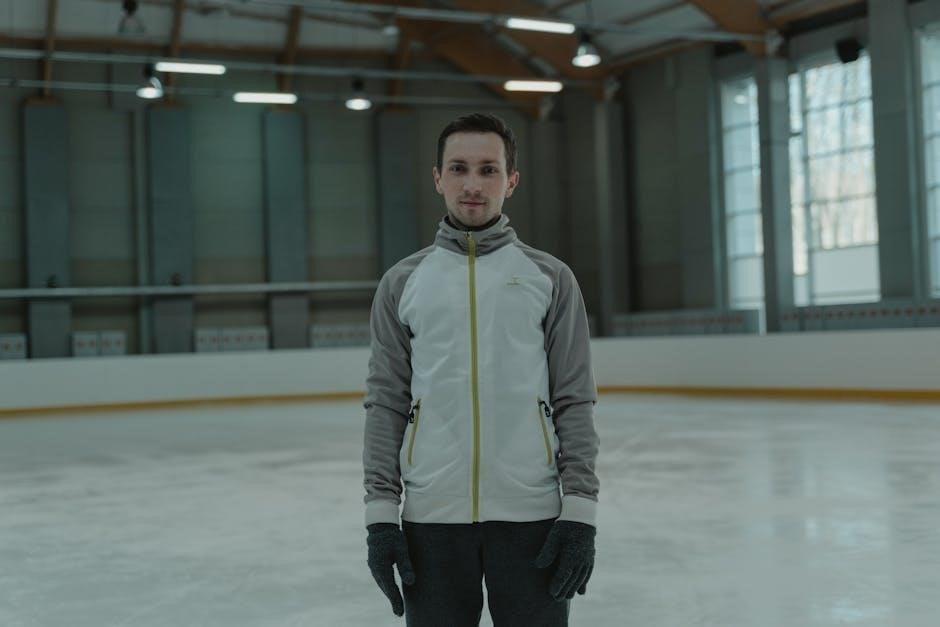
Resources for Further Reading
Explore detailed PDF guides and online forums for comprehensive insights into shin splints exercises, offering expert advice and community support for effective recovery and prevention․
11․1 Recommended PDF Guides
Download comprehensive PDF guides like “Shin Splints Exercises” from OrthoVirginia, offering detailed routines for recovery․ These guides include stretches, strengthening exercises, and expert tips for prevention․ They provide step-by-step instructions and illustrations, making them ideal for self-managed care․ Popular options also cover nutrition and footwear advice to support healing and long-term shin health effectively․
- OrthoVirginia’s Shin Splints Exercises Guide
- Home Workout Plans for Shin Splints
- Preventative Care and Strengthening Routines
11․2 Online Communities and Forums
Join online forums like Runner’s World and Reddit’s r/running for support and advice on shin splints․ These communities share personal experiences, exercise tips, and recovery strategies․ Engage with experts and runners who have successfully managed shin splints, gaining insights and motivation for your own journey․
- Runner’s World Community
- Reddit’s r/running
- Shin Splints Support Groups
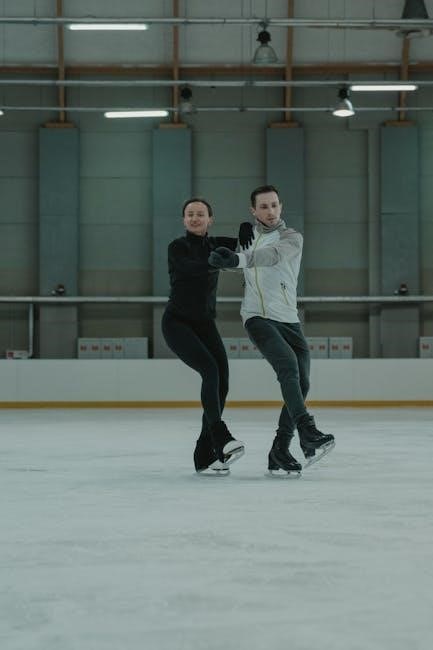
Final Thoughts
Consistent practice, patience, and a holistic approach are key to overcoming shin splints․ Combine targeted exercises with proper care for lasting recovery and injury prevention․
12․1 Importance of Patience in Recovery
Recovering from shin splints requires patience․ Rushing back to activity can worsen the injury, leading to prolonged recovery․ Allowing time for proper healing ensures the injury doesn’t recur․ Consistent, gentle exercises and rest are crucial․ Patience supports the body’s natural repair process, promoting stronger muscles and preventing future shin splints․
12․2 Staying Motivated for Long-Term Health
Staying motivated during recovery is key to long-term health․ Set realistic goals, celebrate small victories, and focus on gradual progress․ Consistent practice prevents relapses and builds resilience․ Remember, every effort brings you closer to full recovery and a stronger, healthier you․ Stay committed to your routine for lasting results and overall well-being․